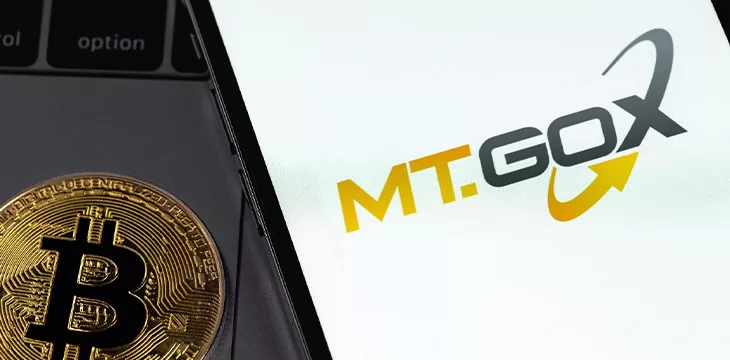|
Getting your Trinity Audio player ready...
|
The saga of Bitcoin exchange Mt. Gox is now set to reach its 10th year anniversary, as the company’s bankruptcy trustee extended the deadline for creditors to submit vital information by almost another year. Account holders, who have endured multiple delays, amendments, and deadline extensions over the years, now have until October 31, 2024, to provide repayment details.
In a letter sent to Mt. Gox’s list of creditors on September 21, bankruptcy trustee Nobuaki Kobayashi wrote that the Tokyo District Court had granted permission to extend the deadline. The previous time limit for submissions expired in April 2023.
Creditors will receive a share of Mt. Gox’s remaining funds, estimated at around 142,000 BTC or a total fiat value of almost JPY69 billion (US$465,794,000). With each passing year, that total decreases due to “professional fees” to manage the rehabilitation process. Since the exchange’s sudden demise occurred before the 2017 Bitcoin chain split, the trustee was also able to add an equivalent amount in BCH to that total. However, no attempt was made to collect BSV from the subsequent BCH/BSV chain split in 2018.
Redistribution was set to begin on October 31, 2023. Those who already submitted their information by the previous deadline will still get their money quicker, though their process will now begin “as early as the end of this year.”
Repayment options included a “Base Repayment,” an “Early Lump-Sum Repayment,” and an “Intermediate Repayment.” Creditors could choose whether to receive a guaranteed repayment as a lump sum or wait until the end of the distribution process and receive a share of whatever BTC/BCH remained. This required them to take a punt on which amount would be larger, though anecdotal reports suggest most went for the Lump-Sum option. There was also an option to receive payouts in fiat currencies or whatever their BTC account was worth at the time of Mt. Gox’s bankruptcy in 2014. Most opted to receive BTC/BCH instead, however, in the hope of recovering more value in the future.
Creditors had to provide the Rehabilitation Trustee with BTC/BCH wallet, exchange, or bank information and complete a KYC process. The automated KYC/submission system was reportedly buggy for some, though, and the new deadline extension suggests a sizeable number of account holders found it either too cumbersome or began and failed to complete the process.
“Please note that the schedule is subject to change depending on the circumstances, and the specific timing of repayments to each rehabilitation creditor has not yet been determined,” the letter added.
The decade-long rehabilitation and repayment process has already seen multiple hold-ups/alterations over the years, including third-party legal challenges; changes to official process handlers (initially Kraken exchange); claim assessment and approvals; and Japanese bankruptcy rule adjustments required to make payouts in digital assets rather than yen-only.
What is the Mt. Gox saga, and why is it significant?
Mt. Gox was not the Bitcoin world’s first major exchange bankruptcy, nor was it the last. But in February 2014, it was the most spectacular of its time. It came right after the “boom” period of 2013, which had seen BTC go from single- and double-figure dollar values to over $1,000. This dramatic leap helped Bitcoin gain mainstream public and media attention for the first real time, meaning far more of the world was watching.
Tokyo-based Mt. Gox was also the global Bitcoin world’s most widely-used exchange at the time. Despite being located in Japan, it was the exchange used by at least 90% (and possibly much more) of Bitcoin buyers and sellers, many of whom had kept their entire BTC holdings in the exchange’s wallets.
After discovering a hacker or other bad actor had emptied most of the BTC from company wallets in mid-February 2014, Mt Gox’s management team froze withdrawals from both BTC and fiat currency accounts (deposits remained available for a period after, a fact that has irked many). Nervous account holders, many of whom had several millions in fiat value parked at the exchange, waited to see if they would ever be able to access their funds again. However, Mt. Gox filed for official bankruptcy a few weeks later, marking the start of creditors’ decade-long wait. Creditors can only hope to receive 10-20% of their account values once repayments begin.
To date, there is still no official record of who stole Mt Gox’s funds or when the theft happened. Unofficially, there have been forensic investigations based upon “leaked” account information and Mt. Gox blockchain transaction records.
These have suggested the BTC was drained slowly from the exchange’s wallets over a period of time or even that the wallets were already empty when CEO/owner Mark Karpeles took over operating the company. Mt. Gox had reportedly attempted to cover the losses with price-manipulating trading bots that boosted the BTC price; however, this strategy ultimately failed at the beginning of 2014 when BTC’s fiat value stalled and then began falling.
Along with the real-world identity of Satoshi Nakamoto, “who stole Mt. Gox’s BTC?” has been one of Bitcoin’s most enduring mysteries.
Interest in Mt. Gox has faded over time and is now of interest primarily to forensic analysts and creditors, while Satoshi sleuths now spend most of their time and energy attempting to debunk Dr. Craig S. Wright’s claims to be Satoshi, rather than trying to find any alternative as Bitcoin’s original creator.
Follow CoinGeek’s Crypto Crime Cartel series, which delves into the stream of group—from BitMEX to Binance, Bitcoin.com, Blockstream, ShapeShift, Coinbase, Ripple,
Ethereum, FTX and Tether—who have co-opted the digital asset revolution and turned the industry into a minefield for naïve (and even experienced) players in the market.

 07-15-2025
07-15-2025 





